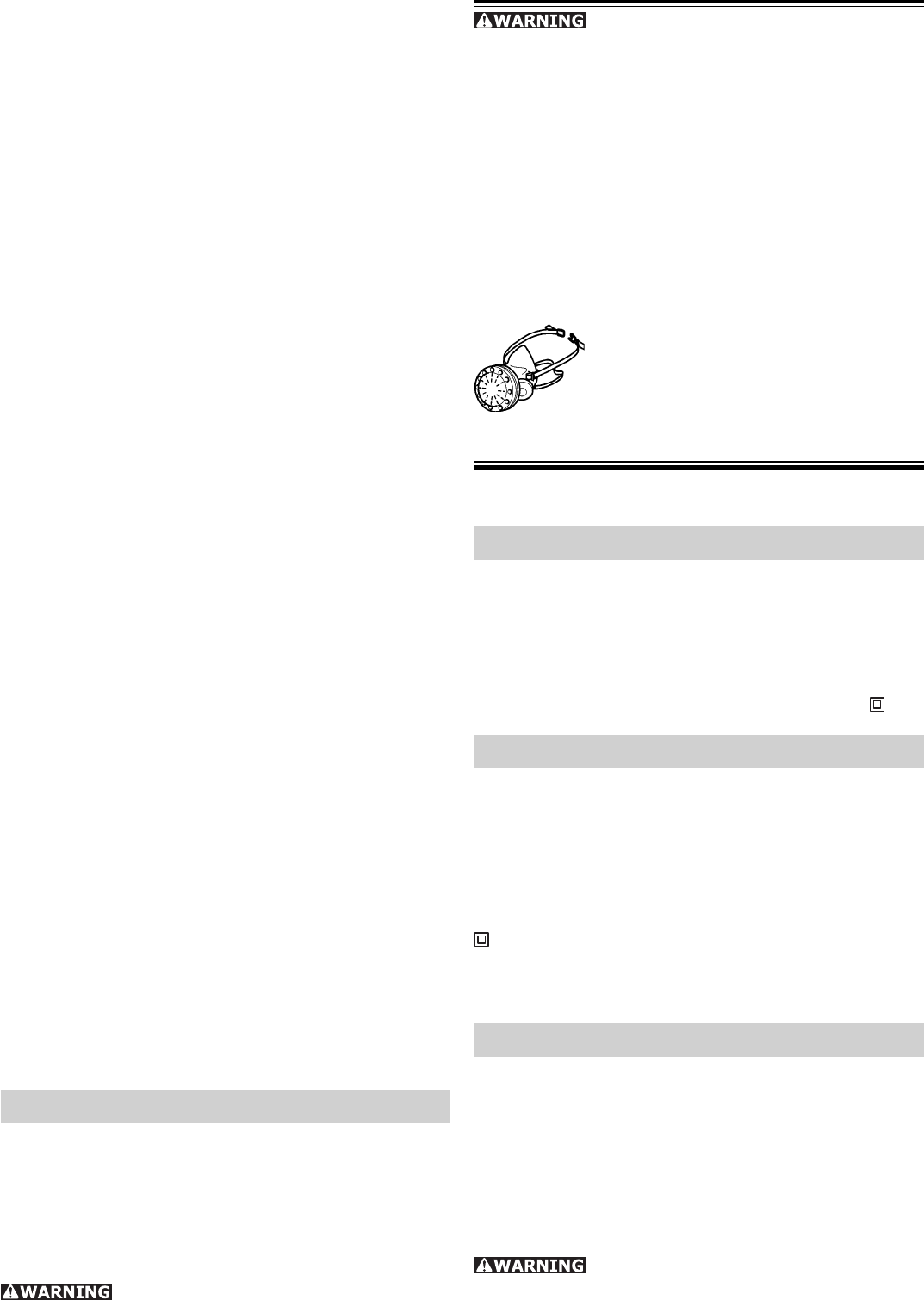
3
Technical data
Wattage ............................................. 720 W
No load speed .......................3300 - 6800 rpm
Sanding stroke .........................5 mm (0.2 in.)
Sanding base dia. ................ 150 mm (5.9 in.)
Weight ..................................2.3 kg (5.1 lbs.)
Safety level ..............................................
/ II
Symbols
V Volts
A Amperes
Hz Hertz
W Watt
~ Alternating current
n
0
No load speed
Class II Construction
rpm Revolutions per minute
Ø Diameter
Intended use
The sanders are designed for sanding and polish-
ing wood, plastic, metal, stone, composite materi-
als, paint/varnish, fi ller and similar materials.
Do not use with materials containing asbestos.
The tools must not be used when wet or damp,
or operated in a damp environment, for electri-
cal safety reasons. Use this sander only for dry
sanding.
The user bears sole responsibility for
any damage or accidents resulting from incorrect
use.
used. Use of these devices can reduce dust re-
lated hazards.
4) Tool use and care
a) Do not force the power tool. Use the cor-
rect power tool for your application. The cor-
rect power tool will do the job better and safer at
the rate for which it was designed.
b) Do not use the power tool if the switch
does not turn it on and off. Any power tool that
cannot be controlled with the switch is dangerous
and must be repaired.
c) Disconnect the plug from the power
source before making any adjustments,
changing accessories, or storing power tools.
Such preventive safety measures reduce the risk
of starting the power tool accidentally.
d) Store idle power tools out of the reach of
children and do not allow persons unfamiliar
with the power tool or these instructions to
operate the power tool. Power tools are dan-
gerous in the hands of untrained users.
e) Maintain power tools. Check for misalign-
ment or binding of moving parts, breakage
of parts and any other condition that may af-
fect the power tools operation. If damaged,
have the power tool repaired before use.
Many accidents are caused by poorly maintained
power tools.
f) Keep cutting tools sharp and clean. Properly
maintained cutting tools with sharp cutting edges
are less likely to bind and are easier to control.
g) Use the power tool, accessories and tool
bits etc., in accordance with these instruc-
tions and in the manner intended for the
particular type of power tool, taking into
account the working conditions and the
work to be performed. Use of the power tool
for operations different from those intended could
result in a hazardous situation.
5) Service
a) Have your power tool serviced by a quali-
fi ed repair person using only identical re-
placement parts. This will ensure that the safety
of the power tool is maintained.
Specifi c Safety Rules
a) Hold power tools by insulated gripping
surfaces only, when performing an operation
where the cutting accessory may contact
hidden wiring or its own cord. Contact with a
„live“ wire will make exposed metal parts of the
power tool „live“ and shock the operator.
TO REDUCE THE RISK OF INJURY,
USER MUST READ AND UNDERSTAND IN-
STRUCTION MANUAL.
Various dust created by power sand-
ing, sawing, grinding, drilling and other construc-
tion activities contains chemicals known (to the
State of California) to cause cancer, birth defects
or other reproductive harm. Some examples of
these chemicals are:
• Lead from lead-based paints,
• Crystalline silica from bricks and cement and
other masonry products,
• Arsenic and chromium from chemically-treated
lumber.
The risk from these exposures varies, depending
on how often you do this type of work.
To reduce your exposure to these
chemicals work in a well ventilated
area and use approved safety equip-
ment, such as dust masks that are
specially designed to fi lter out micro-
scopic particles.


















